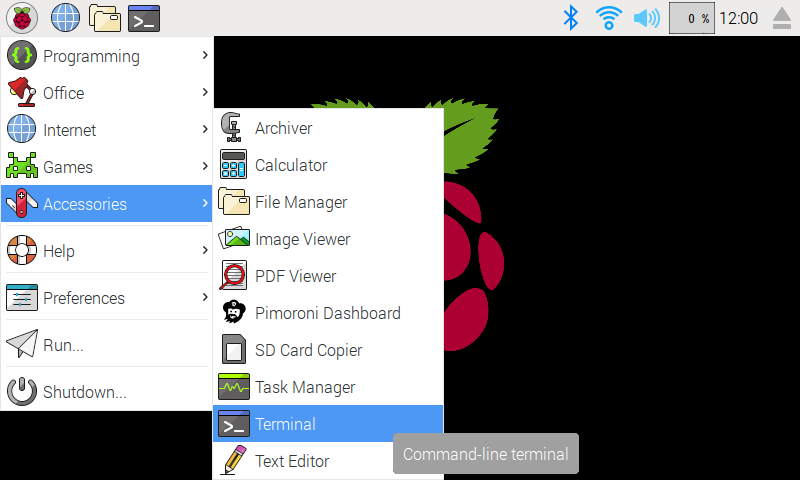 http://shop.pimoroni.com/products/unicorn-hat-hd
http://shop.pimoroni.com/products/unicorn-hat-hd
We've created an easy installation script that will install all pre-requisites and get your Unicorn HAT HD up and running with minimal efforts. To run it, fire up Terminal which you'll find in Menu -> Accessories -> Terminal on your Raspberry Pi desktop, as illustrated below:
In the new terminal window type the command exactly as it appears below (check for typos) and follow the on-screen instructions:
curl https://get.pimoroni.com/unicornhathd | bashIf you choose to download examples you'll find them in /home/pi/Pimoroni/unicornhathd/. To prototype and try out your code without having to deploy it onto a Raspberry Pi every time, you can use the Unicorn HAT simulator to run a mock Unicorn HAT on your computer.
SPI needs to be enabled to communicate with the Unicorn Hat HD. If the SPI on your Pi is not enabled or you are unsure if it is:
sudo raspi-config nonint do_spi 0
sudo rebootsudo apt-get install python3-pip python3-dev python3-spidev
sudo pip3 install unicornhathdsudo apt-get install python-pip python-dev python-spidev
sudo pip install unicornhathdIf you want to contribute, or like living on the edge of your seat by having the latest code, you should clone this repository, cd to the library directory, and run:
sudo apt-get install python-dev python-setuptools
sudo python3 setup.py install(or sudo python setup.py install whichever your primary Python environment may be)
In all cases you will have to enable the SPI bus.
- Function reference - http://docs.pimoroni.com/unicornhathd/
- GPIO Pinout - http://pinout.xyz/pinout/unicorn_hat_hd
- Get help - http://forums.pimoroni.com/c/support


